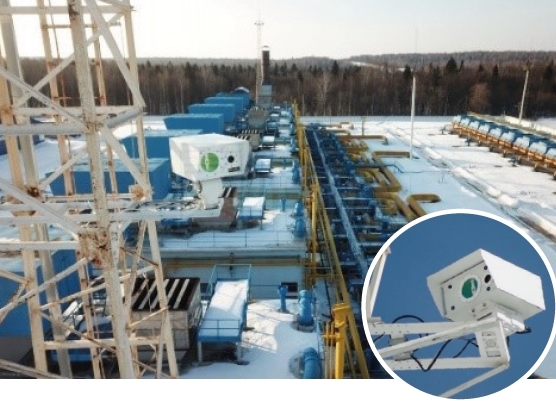- "The standard program for natural gas emissions evaluation at Gazprom facilities";
- "Methods of measuring the volume of methane emissions into the atmosphere at Gazprom facilities";
- "Methodological guidelines for calculation of gross hydrocarbon emissions into the atmosphere at Gazprom (total)"
- l "Methodology for determining the standard losses of combustible natural gas during production at Gazprom organizations";
- l "Methods of natural gas consumption rationing for own technological needs and technological losses of gas trunkline transport";
- l "Methodology for the determination of natural gas consumption rates and normative requirements for own technological needs of Gazprom processing facilities";
- "Methods of determining normative technological losses of natural gas, gas condensate, oil at processing facilities";
- l "Instruction on calculation and rationing of emissions at gas distribution stations (automated gas distribution stations, gas control units), gas measuring stations";
- l "Methodology for determining gas expenditures for technological needs of gas companies and losses in gas distribution systems";
- l "Technical standards for natural gas emissions and leaks from the process equipment";
- l "Standards for pollutants emissions into the atmosphere from gas production, transportation and storage", etc.
Metering units fix the level of consumption and volumes of natural gas supplied from the field process facilities, underground gas storages, and gas processing plants to main gas pipelines which is then transported to Russian consumers and foreign countries, as well as used for Gazprom’s own technological needs. All metering equipment is subject to regular metrological check-ups.
It is not possible within the scope of this paper to provide an exhaustive list of all the detailed ‘on the ground' checks and verifications undertaken by Gazprom to monitor (and eliminate) methane emissions, not least in order to meet the abovementioned Russian legal requirements. However, the following provides a series of illustrative examples indicating the detailed and exhaustive nature of such verifications and monitoring activity:
- Leakages of methane due to leakage of equipment are determined by regular and consistent measurements with the design of relevant protocols. Works on detection and measurement of methane leaks by remote methods with the use of air-based measuring instruments are carried out at least once a quarter.
- Continuous 24-hour monitoring systems are deployed and being extended to detect methane in the atmosphere and to automatically signal if methane concentration is exceeded. For example, a remote laser methane detector with a threshold sensitivity at 0.1 sec averaging is used:
— from a distance of 100 meters — 100 ppmxm;
— from a distance of 200 meters — 400 ppmxm.
The detector is a stationary device and is used at natural gas production, transportation, storage and processing facilities.

- With respect to the task of detecting methane at gas industry facilities, detectors installed on helicopters or drones are also used.

- In addition to the use of helicopters, surveys of the technical condition of main gas pipelines are carried out with laser detectors of gas leaks. Between 2017 and 2019, PJSC Gazprom experimentally tested the technology of gas leaks detection using unmanned aerial vehicles (drones). In case of leakage detection, appropriate measures are taken within the shortest possible time.
- Gazprom is currently developing satellite monitoring capacity in the town of Shchelkovo in the Moscow region to reinforce these land based verification methods. The Smotr-V remote-sensing satellite with a gas analyser on board will be assembled and tested at this high-tech facility in 2022−2024. The launch of this satellite will enable the Gazprom Group to monitor gas leaks in gas pipelines and other production facilities directly from space more efficiently.
- Gazprom established a corporate control of gas leaks which is carried out by a specialized Inspection Panel which acts independently of gas transmission and gas production subsidiaries. The inspection results are submitted to the PJSC Gazprom management for coordination and control on a monthly basis (or on an ad hoc basis, where necessary).
- In accordance with the established requirements, natural gas consumption for fuel needs is measured with realtime (24/7) meters.
- Methane emissions from the use of natural gas for own technological needs (technological blowing and venting of natural gas) are estimated on a monthly basis by calculation methods in accordance with both recognized industry standards/methods and the company’s internal standards.
- Uncertainty of data is related to the error of metering devices for measuring gas consumption for own technological needs. The error for gas metering devices for fuel needs is 0.5%.
